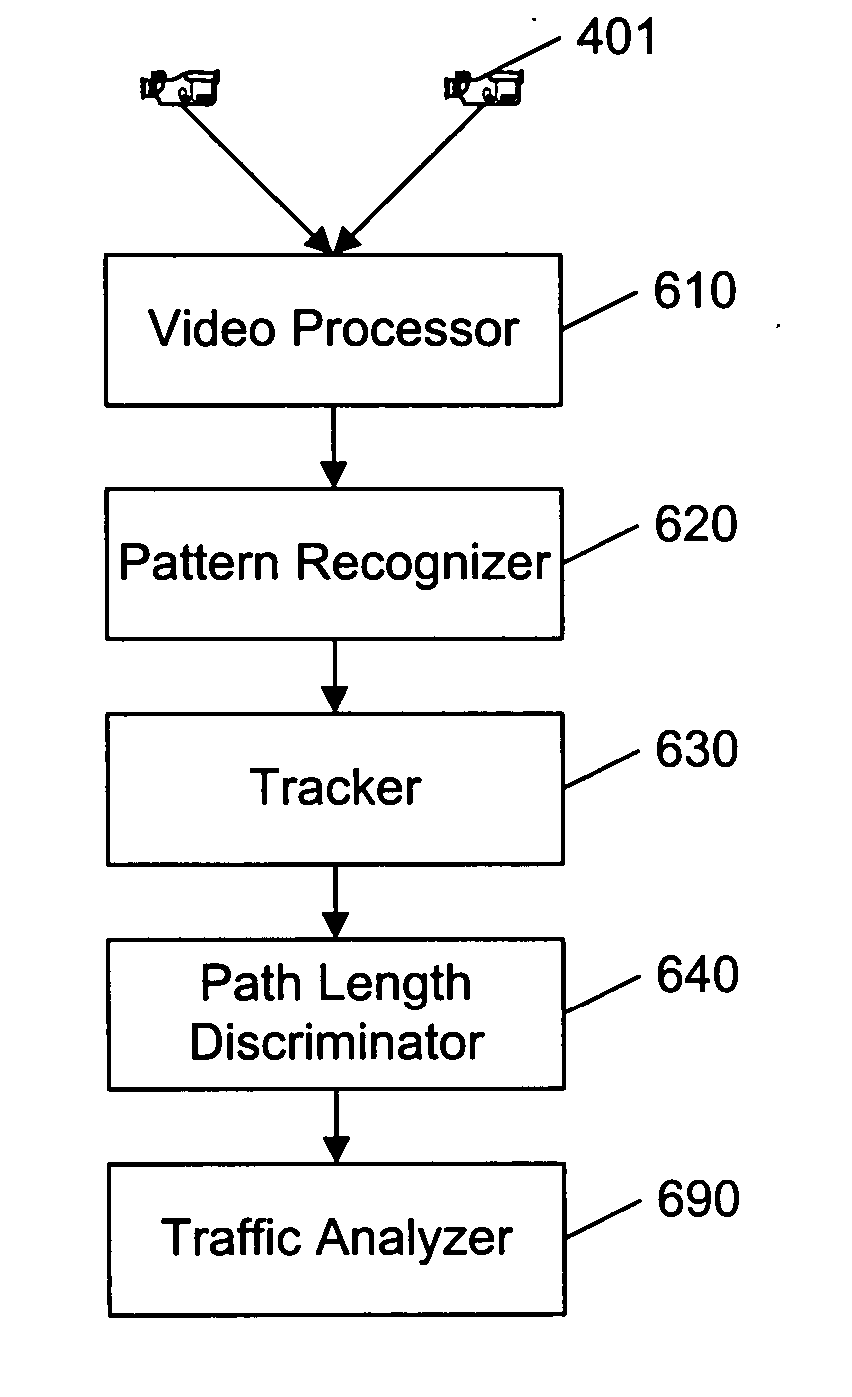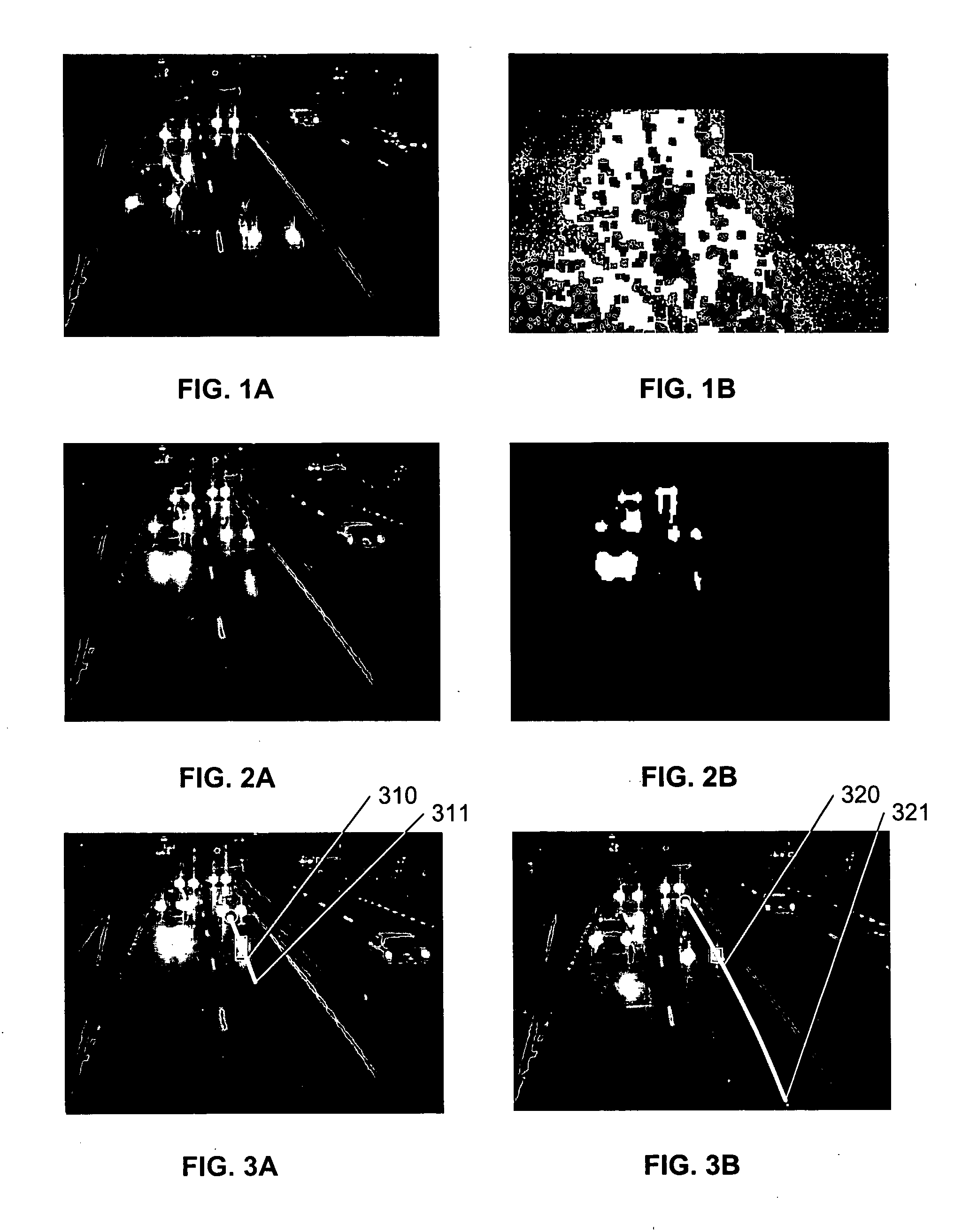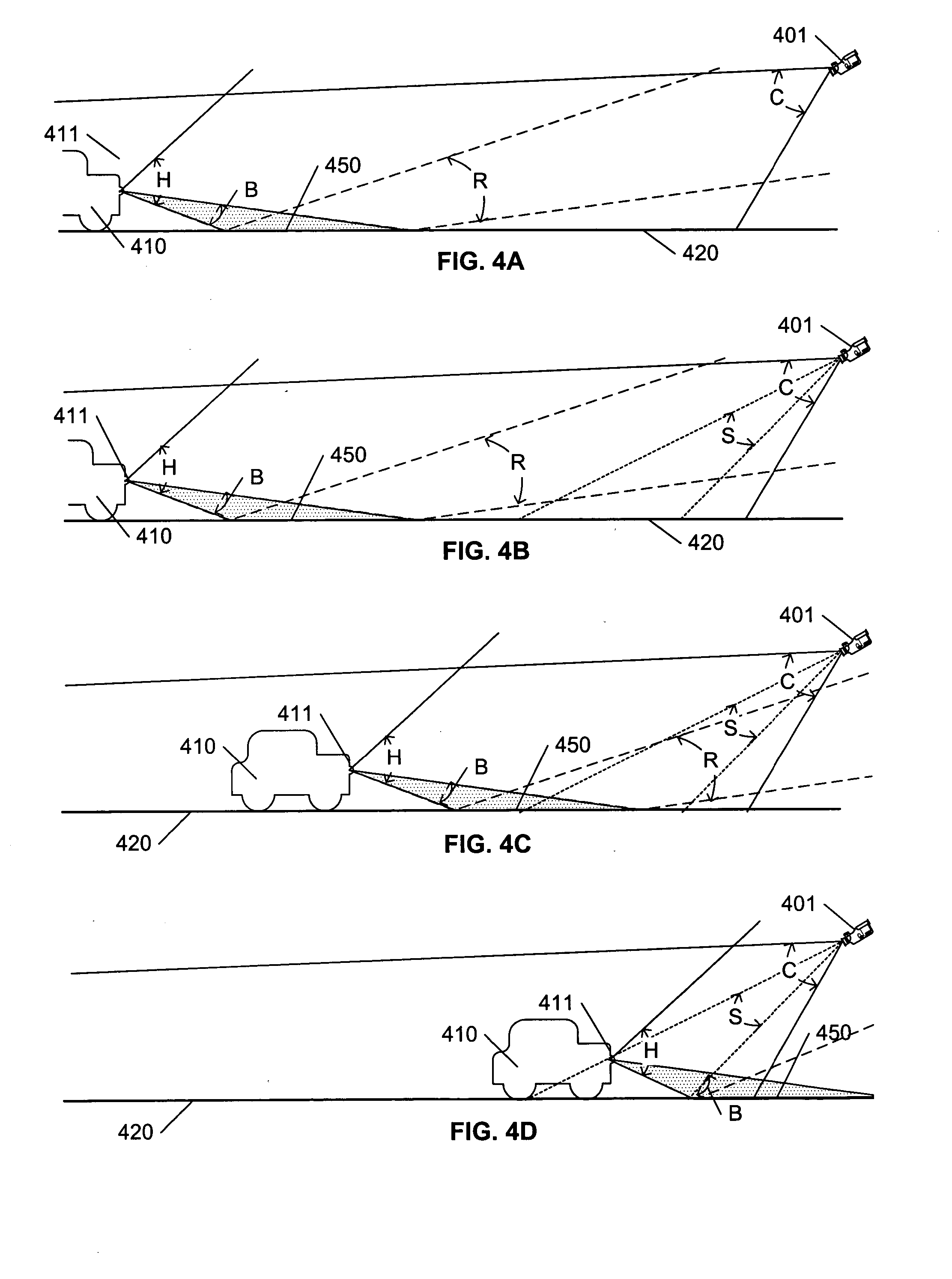System and method for counting cars at night
- Summary
- Abstract
- Description
- Claims
- Application Information
AI Technical Summary
Benefits of technology
Problems solved by technology
Method used
Image
Examples
Embodiment Construction
[0022] The invention is presented herein using the paradigm of a traffic analysis system that is configured to count vehicles on a roadway at night. One of ordinary skill in the art will recognize that the examples presented herein are intended for ease of presentation and understanding, and that the principles presented herein are not limited to this example application.
[0023]FIGS. 1A and 1B illustrate the difficulties associated with attempting to recognize shapes in a typical image of a roadway at night. Because of the reduced overall lighting level, and the contrast provided by vehicle headlights, it is difficult to clearly determine the shape of each vehicle in FIG. 1A.
[0024]FIG. 1B illustrates the results of a conventional background-subtraction processing of the image of FIG. 1A. In this example, FIG. 1B is created by detecting differences between the image of FIG. 1A and a reference model of the scene without vehicles. A shadow detection process is also typically employed,...
PUM
 Login to View More
Login to View More Abstract
Description
Claims
Application Information
 Login to View More
Login to View More - R&D
- Intellectual Property
- Life Sciences
- Materials
- Tech Scout
- Unparalleled Data Quality
- Higher Quality Content
- 60% Fewer Hallucinations
Browse by: Latest US Patents, China's latest patents, Technical Efficacy Thesaurus, Application Domain, Technology Topic, Popular Technical Reports.
© 2025 PatSnap. All rights reserved.Legal|Privacy policy|Modern Slavery Act Transparency Statement|Sitemap|About US| Contact US: help@patsnap.com



